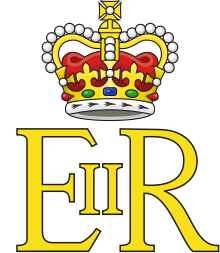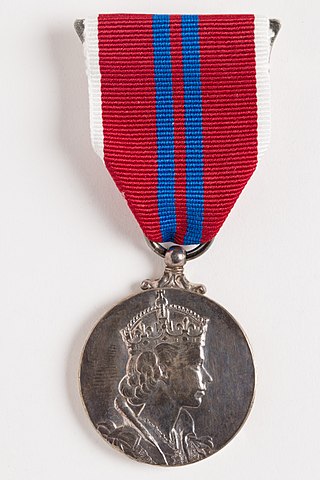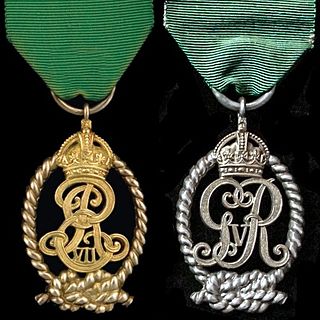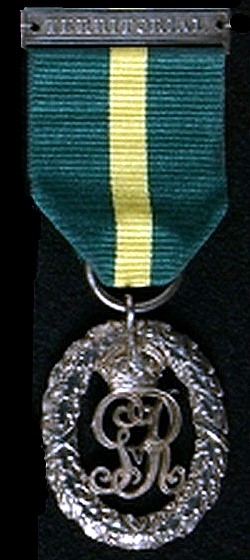
The Pillar Box War refers to a number of politically motivated acts of vandalism against post boxes in Scotland during the early 1950s in a dispute over the correct title in Scotland of the new British monarch, Elizabeth II or Elizabeth I. [1]

The Pillar Box War refers to a number of politically motivated acts of vandalism against post boxes in Scotland during the early 1950s in a dispute over the correct title in Scotland of the new British monarch, Elizabeth II or Elizabeth I. [1]
Ascending to the throne in February 1952, Elizabeth adopted the royal style of Elizabeth the Second. This was reflected in her royal cypher, which took the Latin form 'EIIR'. Some objected to this usage as the new queen was the first Elizabeth to reign over the United Kingdom or indeed Great Britain, Elizabeth I having been the queen of the former kingdoms of England and Ireland but not Scotland. [2]
In 1953, John MacCormick took legal action against the Lord Advocate in the case of MacCormick v Lord Advocate , challenging the Queen's right to call herself Elizabeth the Second. The case failed on the grounds that the matter was within the royal prerogative, and thus the Queen was free to adopt any title she saw fit. [2]
Some occasions of vandalism and even explosions of post boxes which carried the Queen's 'EIIR' insignia were recorded. [3] [4] One particular pillar box in Edinburgh's Inch district was repeatedly vandalised with tar, paint and a hammer before being blown to pieces less than three months after its unveiling. [5]
The folksongs Sky High Joe [6] and The Ballad of the Inch [7] commemorate these events. [8]
After 1953, new post boxes were placed in Scotland carrying only the Crown of Scotland image rather than the 'EIIR' cypher, [9] [10] which continued to be used in the rest of the United Kingdom, and indeed in some of the Queen's other realms and territories. A post box with the 'EIIR' cypher was installed in Dunoon in 2018 and immediately scheduled for replacement on discovery of the error. [11]
Regnal numbers are ordinal numbers used to distinguish among persons with the same name who held the same office. Most importantly, they are used to distinguish monarchs. An ordinal is the number placed after a monarch's regnal name to differentiate between a number of kings, queens or princes reigning the same territory with the same regnal name.
Ian Robertson Hamilton KC was a Scottish lawyer and nationalist, best known for his part in the return of the Stone of Destiny from Westminster Abbey to Arbroath Abbey in 1950.

St Edward's Crown is the centrepiece of the Crown Jewels of the United Kingdom. Named after Saint Edward the Confessor, versions of it have traditionally been used to crown English and British monarchs at their coronations since the 13th century.
A regnal name, regnant name, or reign name is the name used by monarchs and popes during their reigns and, subsequently, historically. Since ancient times, some monarchs have chosen to use a different name from their original name when they accede to the monarchy.

MacCormick v Lord Advocate 1953 SC 396 was a Scottish constitutional law case and Scottish legal action on whether Queen Elizabeth II was entitled to use the numeral "II" as her regnal number in Scotland, as there had never been an earlier Elizabeth reigning in Scotland.

A post box, also known as a collection box, mailbox, letter box or drop box is a physical box into which members of the public can deposit outgoing mail intended for collection by the agents of a country's postal service. The term post box can also refer to a private letter box for incoming mail.

A pillar box is a type of free-standing post box. They are found in the United Kingdom and British overseas territories, and, less commonly, in many members of the Commonwealth of Nations such as Cyprus, India, Gibraltar, Hong Kong, Malta, New Zealand and Sri Lanka, as well as in the Republic of Ireland. Pillar boxes were provided in territories administered by the United Kingdom, such as Mandatory Palestine, and territories with agency postal services provided by the British Post Office such as Bahrain, Dubai, Kuwait and Morocco. The United Kingdom also exported pillar boxes to countries that ran their own postal services, such as Argentina, Portugal and Uruguay.

Wall boxes are a type of post box or letter box found in many countries including France, the United Kingdom, the Commonwealth of Nations, Crown dependencies and Ireland. They differ from pillar boxes in that, instead of being a free-standing structure, they are generally set into a wall or supported on a free-standing pole, girder or other stable structure.

Lamp boxes are the smallest of the post boxes used by the Royal Mail in the UK, by its counterparts in the Commonwealth of Nations and also by An Post in Ireland. Their name derives from the fact that they were designed to be affixed to lamp posts, although they may equally be found embedded in walls or mounted on poles.
The Great Seal of Northern Ireland is the seal used for Northern Ireland. The great seal is in the possession of the Secretary of State for Northern Ireland. The Great Seal was created by the Irish Free State Act 1922 on the creation of Northern Ireland for possession by the Governor of Northern Ireland to "be used for all matters in Northern Ireland for which the Great Seal of Ireland was theretofore used".

The Queen Elizabeth II Coronation Medal is a commemorative medal instituted to celebrate the coronation of Queen Elizabeth II on 2 June 1953.

The Crown of Scotland is the centrepiece of the Honours of Scotland. It is the crown that was used at the coronation of the monarchs of Scotland, and it is the oldest surviving crown in the British Isles and among the oldest in Europe.

In modern heraldry, a royal cypher is a monogram or monogram-like device of a country's reigning sovereign, typically consisting of the initials of the monarch's name and title, sometimes interwoven and often surmounted by a crown. Such a cypher as used by an emperor or empress is called an imperial cypher. In the system used by various Commonwealth realms, the title is abbreviated as 'R' for 'rex' or 'regina'. Previously, 'I' stood for 'imperator' or 'imperatrix' of the Indian Empire.

In the UK, a Ludlow wall box is a post box where mail is deposited to be collected by the Royal Mail. They are built into stone pillars or the walls of buildings and are never found free-standing. This is because they are made largely from wood. They were nearly all made by the now-defunct company of James Ludlow & Son of Birmingham, whose name they take. Similar designs exist as historical artefacts in certain Commonwealth countries. Ludlow style boxes have been in use since 1885 and were in continuous manufacture until 1965.

The Decoration for Officers of the Royal Naval Volunteer Reserve, post-nominal letters VD until c. 1947 and VRD thereafter, was instituted in 1908. It could be awarded to part-time commissioned officers in the United Kingdom's Royal Naval Volunteer Reserve after twenty years of service as efficient and thoroughly capable officers. The decoration was a Naval version of the Volunteer Officers' Decoration and its successor, the Territorial Decoration.

The Efficiency Decoration, post-nominal letters TD for recipients serving in the Territorial Army of the United Kingdom or ED for those serving in the Auxiliary Military Forces, was instituted in 1930 for award to part-time officers after twenty years of service as an efficient and thoroughly capable officer. The decoration superseded the Volunteer Officers' Decoration, the Colonial Auxiliary Forces Officers' Decoration and the Territorial Decoration.

The coronation of Elizabeth II as queen of the United Kingdom and the other Commonwealth realms took place on 2 June 1953 at Westminster Abbey in London. She acceded to the throne at the age of 25 upon the death of her father, George VI, on 6 February 1952, being proclaimed queen by her privy and executive councils shortly afterwards. The coronation was held more than one year later because of the tradition of allowing an appropriate length of time to pass after a monarch dies. It also gave the planning committees adequate time to make preparations for the ceremony. During the service, Elizabeth took an oath, was anointed with holy oil, was invested with robes and regalia, and was crowned Queen of the United Kingdom, Canada, Australia, New Zealand, South Africa, Pakistan, and Ceylon.

The Tudor Crown, also known as the Imperial Crown, is a widely used symbol in the heraldry of the United Kingdom. In use officially from 1902 to 1953 and again from 2022, it represents both the British monarch personally and "the Crown", meaning the sovereign source of governmental authority. As such, it appears on numerous official emblems in the United Kingdom, British Empire and Commonwealth.

To commemorate British gold medal winners at the 2012 Summer Olympics and 2012 Summer Paralympics, various post boxes in the home towns of the medal winners around the United Kingdom, plus one each on Sark and the Isle of Man, were repainted gold. It marked the first occasion in modern times that the colour of post boxes in the United Kingdom had been changed from their traditional red. Originally intended to be a temporary measure, due to the positive public response it was later decided the colour change would become a permanent tribute, with boxes additionally receiving their own special plaques.
Events from the year 1952 in Scotland.
Q = Queen Elizabeth. When the first of Queen Elizabeth's boxes were erected in Scotland, in 1952, some objected to the EIIR cipher, arguing that Scotland had never had an Elizabeth I. Several boxes in Scotland were vandalised. The problem went as far as the prime minister; eventually it was decided that Scottish boxes would bear a Scottish Crown in place of the EIIR cipher.